Volume 29, Issue 2
Displaying 1-12 of 12 articles from this issue
- |<
- <
- 1
- >
- >|
-
2003 Volume 29 Issue 2 Pages 1-7
Published: March 31, 2005
Released on J-STAGE: March 12, 2010
Download PDF (721K) -
2003 Volume 29 Issue 2 Pages 8-14
Published: March 31, 2005
Released on J-STAGE: March 12, 2010
Download PDF (8062K) -
2003 Volume 29 Issue 2 Pages 15-20
Published: March 31, 2005
Released on J-STAGE: March 12, 2010
Download PDF (989K) -
2003 Volume 29 Issue 2 Pages 21-27
Published: March 31, 2005
Released on J-STAGE: March 12, 2010
Download PDF (1021K) -
2003 Volume 29 Issue 2 Pages 28-34
Published: March 31, 2005
Released on J-STAGE: March 12, 2010
Download PDF (760K) -
2003 Volume 29 Issue 2 Pages 35-41
Published: March 31, 2005
Released on J-STAGE: March 12, 2010
Download PDF (2061K) -
2003 Volume 29 Issue 2 Pages 42-47
Published: March 31, 2005
Released on J-STAGE: March 12, 2010
Download PDF (855K) -
2003 Volume 29 Issue 2 Pages 48-53
Published: March 31, 2005
Released on J-STAGE: March 12, 2010
Download PDF (1075K) -
2003 Volume 29 Issue 2 Pages 54-61
Published: March 31, 2005
Released on J-STAGE: March 12, 2010
Download PDF (1306K) -
2003 Volume 29 Issue 2 Pages 62-64
Published: March 31, 2005
Released on J-STAGE: March 12, 2010
Download PDF (287K) -
2003 Volume 29 Issue 2 Pages 65-67
Published: March 31, 2005
Released on J-STAGE: March 12, 2010
Download PDF (367K) -
2003 Volume 29 Issue 2 Pages 68-73
Published: March 31, 2005
Released on J-STAGE: March 12, 2010
Download PDF (654K)
- |<
- <
- 1
- >
- >|
